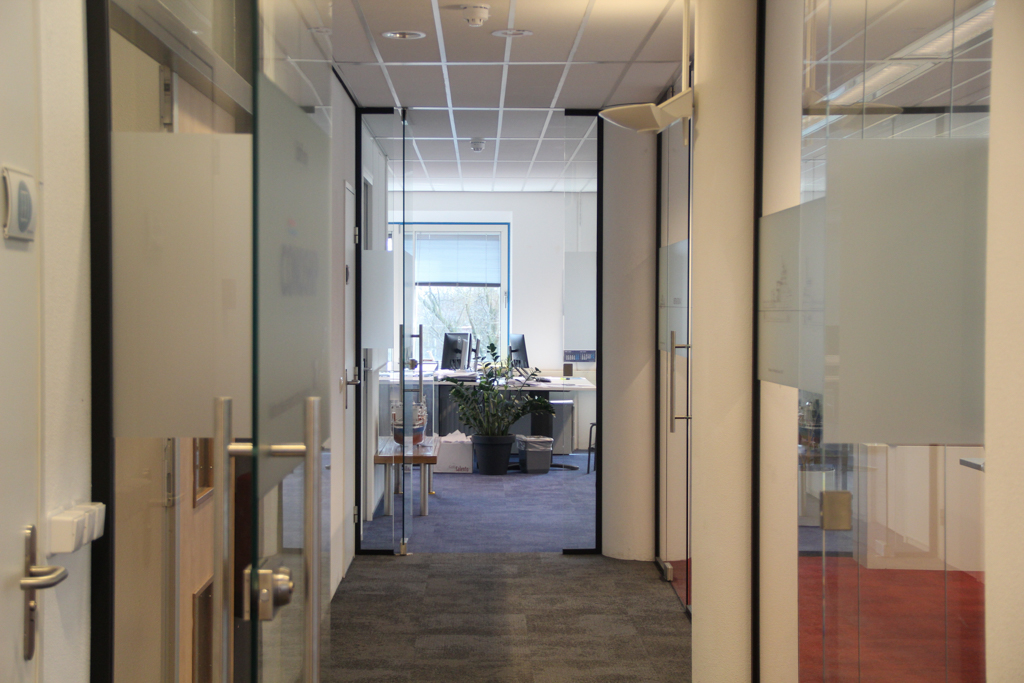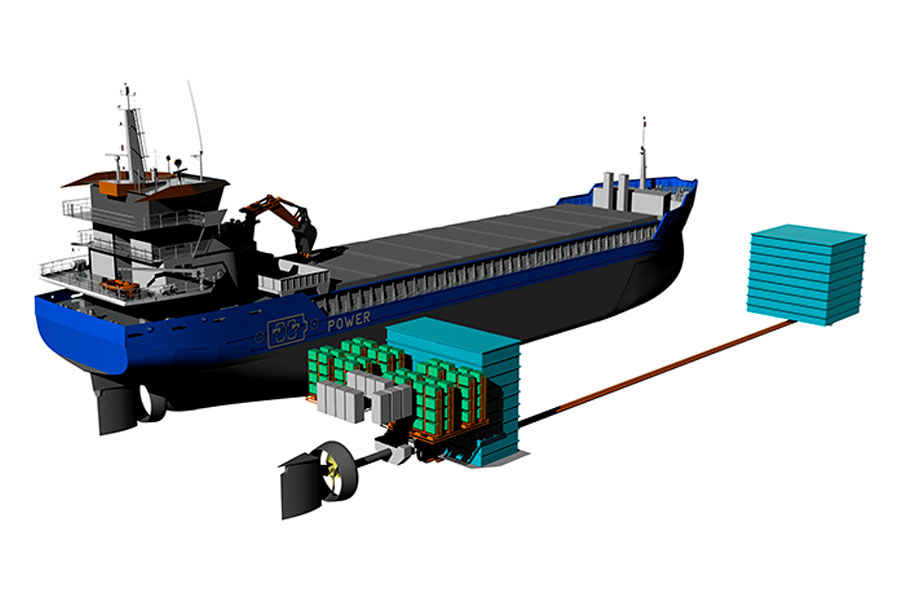Safe and sustainable: redox flow batteries for ships
Piet Visser’s graduation research on implementation, risks, and opportunities
Redox flow batteries (RFB) are already widespread for stationary energy reserves, but in the maritime industry their potential remains largely unexplored. Former graduation student and now full-time employee, Piet Visser, delved into the feasibility of redox flow battery for ships on board short-sea operating vessels. At Conoship, we consider full– or partly electric propulsion a crucial element for reaching the 2050 sustainability goals.
Personal experience & transition to Conoship
Over the last academic semester, Piet has been conducting his research and integrating at the Conoship office in Groningen. He has done so with remarkable success as his degree in Maritime Technology has been concluded and he has since begun as a full-time employee.
‘It was a wonderful experience working for Conoship due to the comfortable working environment and exciting graduation assignment. During the project I learned a lot, but I am happy to be a full-time employee right now.’
Studying at NHL Stenden was a resourceful experience to help delve into the fundamentals of maritime technology. However, doing a theoretical research project with clear practical implications has allowed Piet to delve into something truly unique.

Understanding redox flow batteries for ships
Redox flow batteries are an innovative energy storage solution that has already gained traction in stationary applications worldwide. Unlike conventional battery systems, RFBs store energy in a liquid electrolyte and release it through electrochemical reactions. The major advantage, compared to traditional batteries, is their energy efficiency, long cycle life, and scalability. Additionally, RFBs do not run the risk of combusting like lithium batteries, providing a major safety boost for sailors.
At the core of an RFB is an electrochemical cell divided into two chambers: one positive and one negative, separated by a membrane. The electrolyte, which contains active chemical species, is pumped through these chambers, where energy is stored or released based on the reaction taking place. The choice of electrolyte is crucial, as it determines the battery’s energy density, efficiency, and overall feasibility for marine applications.

Research findings
For this research, a vanadium-based electrolyte using hydrochloric acid (HCl) as a solvent was selected due to its high energy density of 43 Wh/l (27 Wh/kg) and stable electrochemical properties. Vanadium redox flow batteries (VRFBs) are particularly attractive because they enable full charge-discharge reversibility, have a long lifespan, and are considered safer than conventional lithium-ion batteries due to their non-flammable nature.
The study focused on the feasibility of implementing RFB technology onboard ships, identifying key challenges such as system integration, operational risks, and safety requirements. A risk-based design approach was used to assess potential hazards, including electrolyte leakage, membrane failures, and material corrosion. To mitigate these risks, design measures such as compartmentalized storage, reinforced piping, and automated leak detection were evaluated to ensure safe and reliable operation at sea.
While the research confirms the technical viability of RFBs for maritime use, further refinement is needed to optimize efficiency and scalability. These findings provide a foundation for future development, paving the way for broader discussions on how this technology can contribute to sustainable shipping solutions.
Implications for the maritime industry
- Specialized chemistry expertise is essential for handling electrolytes safely and optimizing system performance.
- Industry collaboration is needed to develop maritime redox flow battery applications. The Digital & Green Maritime Coalition can help connect the right partners.
- Retrofitting potential is high, especially for Conoship’s CIP-series, which is designed for future fuel adaptability.
- Further system design is required to refine integration, safety measures, and efficiency for real-world applications.
- Scalability & Modular Design – RFBs have the potential to be modular, allowing ships to scale energy storage based on operational needs. This could be particularly useful for short-sea vessels with varying energy demands.
- Port Infrastructure & Charging – Unlike conventional fuels, RFB electrolyte refueling and management systems need to be developed at ports. Collaboration with port authorities could accelerate adoption.
- Integration with Hybrid Systems – RFBs could work alongside other energy sources (e.g., methanol, wind, battery-assisted propulsion), making them part of a broader hybrid maritime energy strategy.
Challenges and limitations of redox flow batteries for ships
Implementing redox flow batteries onboard ships presents key challenges, particularly in integrating storage tanks, pumps and piping while ensuring safety and reliability. The corrosive nature of the electrolyte demands strict containment measures to prevent leaks and maintain operational safety.
RFBs also require significant storage volume, making them less suitable for vessels with tight space constraints. While setup costs are high, their long lifespan and cycle stability offer long-term value.
Currently, RFBs are most viable for short-sea vessels – an area where Conoship specializes, positioning us at the forefront of this innovation. However, further design work is needed before large-scale adoption becomes feasible.
Conoship’s approach
At Conoship, we continuously refine ideas to develop the most sustainable and efficient solutions for the maritime industry. Our CIP-series is a prime example—standardized short-sea vessels weren’t common in the market, yet we saw the potential. By focusing on modular, future-proof designs, we created ships that save time, reduce costs, and allow for easy adaptation to new technologies.
The same mindset applies to Redox Flow Batteries (RFBs). While they have yet to be adopted in shipping, their long lifespan, scalability, and safety advantages make them a compelling option. We are actively exploring how RFB technology can be integrated into our designs, particularly for future-fuel-ready vessels like the CIP-series.
To bring this innovation to life, collaboration is key. We are looking for partners in energy storage, shipbuilding, and regulation to develop practical applications for RFBs at sea. Interested in working with us? Let’s shape the future of short-sea shipping together.




